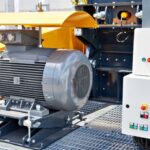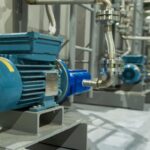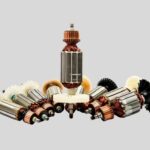Why Sensors are Key Element In the Internet of Things and its various Types
Different types of applications require different types of sensors to collect data from the environment. This article takes a look at some common IoT sensors In an Internet of Things (IoT) ecosystem, two things are very important: the Internet and physical devices like sensors and actuators.
The main purpose of sensors is to collect data from the surrounding environment.
IoT doesn’t work without sensorsThe following sensors can be used to make a more effective pumping system.
Types of Sensors That Can Be Attached to Pumps
1. Temperature Sensors
Dry running or low flow can result in the rise of the internal temperature of the centrifugal pump. Temperature sensors help detect heating in real-time, as well as analyze operational patterns that lead to increasing temperature. It helps to ensure optimal environment temperature at all times
2. Pressure Sensors
A pressure sensor is a device that senses pressure and converts it into an electric signal. Here, the amount depends upon the level of pressure applied. Since Centrifugal pumps rely on liquid for creating flow pressure, these sensors are able to detect any deviation from the standard pressure range. The device notifies the system administrator about any problems that should be fixed.
3. Water Quality Sensors
If the pump deals in pumping water, such as in municipal water quality sensors, it will help to detect the water quality, chlorine residue, suspended solids, pH-level, and Ion monitoring among other requirements.
4. Chemical Sensors
Chemical sensors are ideal for centrifugal pumps used in the chemical industry. Their goal is to indicate changes in liquid or air chemical changes. Highly corrosive chemicals are used in many manufacturing processes in the chemical industry. For instance, sulphuric acid, which is used in the manufacture of fertilizers, and hydrochloric acid, which is often used for process pH balancing, are commonly used yet extremely corrosive and dangerous to worker health.
Handling such highly corrosive chemicals requires the pump to be able to sustain fluid containment and the control of any emissions. Pump seals are the component most vulnerable to attack by corrosive chemicals. Mostly manual checks are done to ensure there are no leakages.
Further presence of corrosive articles can erode internal pump components and substantially reduce pump performance. Apart from erosion, abrasive solids can cause pitting in the pump material, which can lead to problems with corrosion. Thus, chemical sensors can be effective in monitoring the presence of chemicals beyond accepted limits.
5. Gas Sensors
Gas sensors are similar to chemical ones but are specifically used to monitor changes in the air quality and detect the presence of various gases. Like chemical sensors, they are used in centrifugal pumps to detect the presence of toxic or combustible gas. Hazardous gas monitoring is done in pumps used for coal mines, oil and gas industries, chemical laboratory research, manufacturing, including paints, plastics, rubber, pharmaceutical, and petrochemical. A very basic use of a gas sensor can be to detect the vapor pressure of a fluid. It is the pressure, at a given temperature, at which a fluid becomes vapor. This pressure and temperature must be monitored to avoid cavitation, as well as bearing damage caused by dry running when the fluid has evaporated. Gas sensors are an ideal solution to this problem.
6. Smoke Sensors
A smoke sensor is a device that senses smoke (airborne particulates and gases ) and it’s level. They are especially useful to indicate leakage of poisonous gases from pumps. They are a good follow up to temperature sensors or chemical
7. IR Sensors
An infrared sensor is a sensor that is used to sense certain characteristics of its surroundings by either emitting or detecting infrared radiation. It is also capable of measuring the heat being emitted by an object. They can be installed on pumps to gather data about task competitions. For instance, if a pump needs to be manually turned off every three hours to prevent burning, IR sensors will help detect whether the task was actually done at the required interval. They can also detect a variety of chemicals and heat leaks in the centrifugal pump.
8. Level Sensors
A sensor is used to determine the level or amount of fluids, liquids, or other substances that flow in an open or closed system called the level sensor. They are primarily known for measuring fuel levels, but they are also used in pumps that work with liquid materials. An ideal application for such a sensor would be to measure the number of liquid assets that are being pumped. This helps validate expectations and avoid fraud situations. With the continued use of these sensors, any product manager can precisely see how much liquid is ready to be pumped and whether it should be stepped up.
9. Magnetic Sensors
A magnetic sensor or “Hall Effect” sensor is a transducer, which varies its output voltage in reaction to a magnetic field. These types of sensors are used for proximity switching, speed detection, positioning, and current sensing applications. In Centrifugal pumps, they can be used to detect structural wear on impeller blades of centrifugal pumps. Wear and tear of impeller blades lead to reduced pump efficiency and plant downtime. Using a magnetic circuit with the pump and its components, wear is estimated by measuring the gap between the impeller and the pump housing. As the impeller wears, the gap between the impeller and the pump housing increases, causing the reluctance of the magnetic circuit to increase. In turn, it reduces the inductance of the coil driving the magnetic circuit.
These are only some of the most popularly-used sensors with centrifugal pumps. However, the IIoT platform can be customized with the required sensors to pick data that is most relevant to specific business operations. Sensors for the IIoT platform are the most affordable and efficient solution for predictive maintenance and real-time monitoring; as in most cases, they can be installed on existing pumps and do not require any pump.




